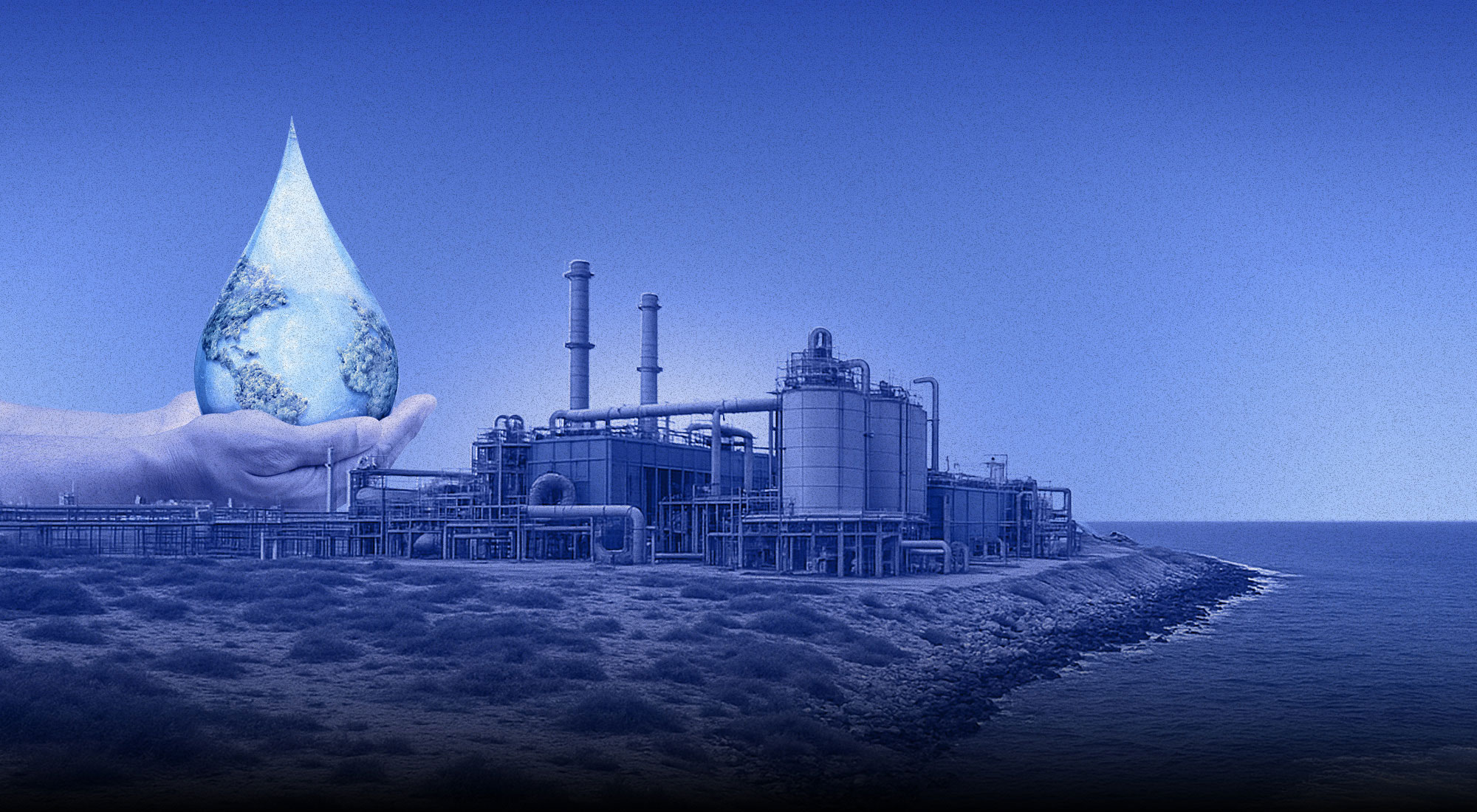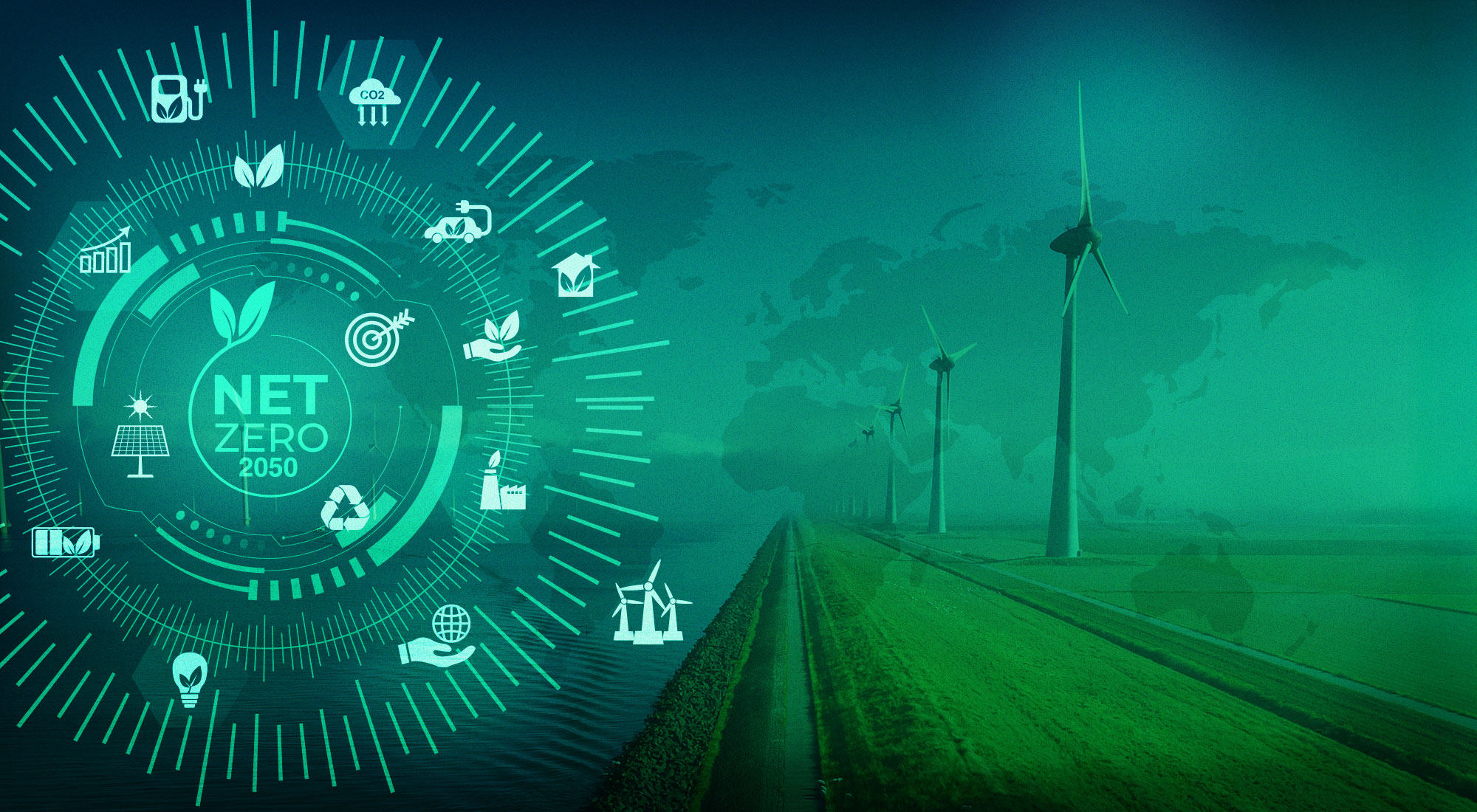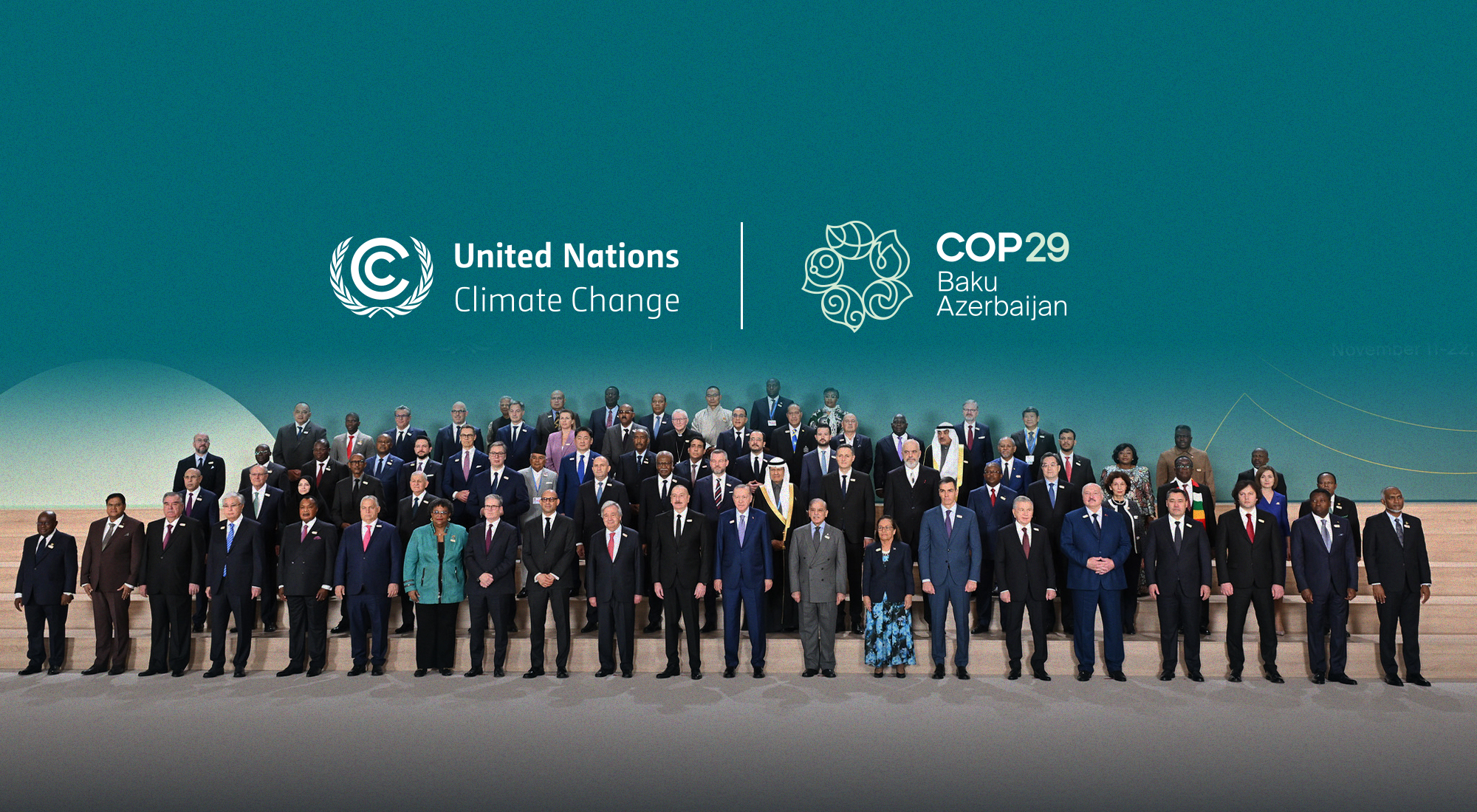It was inconceivable from the outset of COP28, hosted this year by the UAE, that its outcome would be universally welcomed. Nevertheless, the agreement finally reached signifies considerable progress towards halting global warming, even if it falls short of what many scientists claim is still required to save the world from the ongoing climate disaster.[1] Although much work has been left for such future annual global gatherings, and even if planet Earth is far from being safe, there is a greater chance of averting the much-feared global warming cataclysm if everyone complies with their share of the UAE Consensus Agreement,[2] and in a timely manner. It was important that this summit took place in the UAE, which is not only a major oil and gas producer but a leading country when it comes to investments in renewable energy and plans to invest as much as US$54 billion on renewables over the next seven years as part of efforts to reach net zero emissions by 2050.
COP28 was the biggest gathering of its kind, attended by 85,000 participants, where world leaders were joined by representatives from civil society, the business community, indigenous peoples, youth, philanthropy, and international organizations, engaging in the climate change discussion, in the spirit of exchanging innovative solutions and building partnerships and coalitions. This is without ignoring lobbyists who also attended in large numbers, including at least 2,456 from the fossil fuel industry and many others from the meat and dairy industries, who downplay the existential threat to the environment emanating from their activities and prioritize their economic interests over addressing this threat.[3]
One of the most notable achievements of this latest UN climate summit was that, for the first time since these global summits and negotiations over climate change started nearly three decades ago, there is a consensus among nations across the globe that oil and gas contribute to global warming, and for the first time they have acquiesced to the need for a fossil fuel drawdown.[4] Admittedly, COP28 ended with a compromise deal that called for a “transition away” from fossil fuels, while the term “phase-out” had been backed by 130 of the 198 countries present, and hence for now the former has been adopted; but this was better than not even reaching a consensus on this milder acknowledgment that the fossil fuel era is coming to an end.
The very fact that 200 countries, including major oil and gas producers, are now formally recognizing that the world has entered a transition phase at the end of which fossil fuels will either become obsolete or barely in use, is a significant achievement and should be recognized as such. However, the time scale for this transition and the exact mechanism needed to make this objective possible and equitable to all countries rich and poor has not been set.
Another crucial aspect of combating global warming that was highlighted at COP28 was the urgent need for the development of a list of “zero- and low-emission technologies,”[5] including renewables, nuclear, abatement and removal technologies such as carbon capture, utilization and storage, particularly in hard-to-abate sectors, and low-carbon hydrogen production.[6] Additionally, some 50 oil and gas companies worldwide have pledged to curtail leaky methane pipes by 2030. Methane is 21 times more heat-trapping than carbon dioxide, and at least 25% of today’s global warming is driven by methane from human actions. If the companies that made this pledge could fulfill it, their contribution to curbing global warming would be significant.
As much as the environmental discourse has become a central theme in domestic and international affairs, it is only in recent years that the political world has followed the scientific community and civil society in recognizing and internalizing that climate change, commonly used interchangeably with global warming, is a genuine phenomenon, is the result of human activity, and if not stopped, and preferably reversed, could irreversibly harm our planet beyond recognition.
The first serious attempt to set a specific and measurable target to contain climate change took place at COP21 in France in 2015 and ended with the signing of the Paris Agreement.[7] It was agreed then that the primary goal was to hold “the increase in the global average temperature to well below 2°C above pre-industrial levels” and pursue efforts “to limit the temperature increase to 1.5°C above pre-industrial levels”. However, in its immediate aftermath, the need to limit global warming to 1.5°C by the end of this century became apparent. One of the breakthroughs in signing that agreement was that, for the first time, a legally binding international treaty in relation to climate change was adopted by 196 parties.
1.5°C was not an arbitrary figure but the result of the scientific evidence produced by the UN’s Intergovernmental Panel on Climate Change,[8] which indicated that surpassing this threshold increases the risk of unleashing extreme climate change impacts, including heatwaves, more frequent and severe droughts, wildfires, heavy rainfall, and floods, all of which have negatively affected biodiversity, caused the extinction of many species, and harmed human lives and wellbeing. It also increases the risk of mass migration and political instability. The suggested trajectory has been that by limiting global warming to a 1.5°C increase, greenhouse gas emissions must peak before 2025 at the latest and decline by 43% by 2030.[9] But instead, most analysts currently predict a global peak in fossil fuel emissions at some point over the next decade, followed not necessarily by a decline in greenhouse gas emissions but by a long plateau. This in turn means that our human activity will continue for the foreseeable future, every single year, to inflict approximately as much damage to the future of the planet’s climate as was done in recent years. Consequently, the expectation is that the planet’s warming will, by the end of the century, have risen to between 2 and 3°C, along with the destructive consequences for natural habitats and biodiversity that come with such an increase and the prospect of certain parts of the world becoming unhabitable.
Despite setting a clear target and creating an implementation and monitoring mechanism, the Paris Agreement proved to fall short in the face of the pace and magnitude of climate change. This was due to a combination of governments not living up to their commitments, plus evolving scientific evidence that now requires a more agile and dynamic response. The mechanism that has worked on a five-year cycle since 2020 requires countries to submit their national climate action plan, known as Nationally Determined Contributions (NDCs),[10] whereby each successive NDC should reflect an increasingly higher degree of ambition compared to the previous one. It has become apparent that there are great discrepancies between different countries in their ambitions and/or adequate resources to achieve this objective of building resilience to adapt to the impacts of climate change. [11]
What has emerged since the Paris Agreement is that countries are not meeting the targets of tripling renewable energy capacity and doubling energy efficiency improvements by 2030 in order to come close to the 1.5°C increase, as is the case with accelerating efforts towards the phase-down of unabated coal power, phasing out inefficient fossil fuel subsidies, and other measures that drive the transition away from fossil fuels in energy systems in a just, orderly and equitable manner. The parties to the Paris Agreement also established an enhanced transparency framework (ETF).[12] In accordance with ETF, starting in 2024, countries will report transparently on actions taken and progress in climate change mitigation, adaptation measures and support provided or received. The information gathered through the ETF will feed into the Global Stocktake,[13] which will then assess the collective progress towards the long-term climate goals. This aims to lead to recommendations for countries to set more ambitious plans for the next round.
To be sure, the challenge that is set for countries in their encounter with global warming is to enhance their adaptive capacity, strengthen their resilience, and, by that also reduce their vulnerability, but there has not been a clear definition of these goals before COP28, and not enough progress on them was made during this summit.
COP28 saw the first recognition that oil and gas play a role in driving global warming, and by that set the platform for eventual transition from fossil fuels. Yet, the main oil and gas producers and consumers argue that realistically, there is a need for more time to transition to renewable energies and technologies that will reduce the impact of CO2 emissions globally. For instance, there are concerns that the call at the conclusion of COP28 to “accelerate” carbon capture and storage to trap emissions from burning fossil fuels is far from being a proven option in the near future and, in any case, can play only a minor role at best. It is also the case that although the global investment in renewable energy, including by major oil and gas producers, is enormous and 118 governments at COP28 pledged to triple the world’s renewable energy capacity by 2030,[14] which will attract more energy companies to enter or expand their activities in the clean energy market, this will have an impact that is too far down the road. Evidence gathered over the years points out that these intended efforts to cut the share of fossil fuels in the world’s energy production through investment in renewables have been added to oil, coal and gas as a source of energy rather than replacing them.[15]
On the issue of a more equitable shouldering of the work to combat climate change, COP28 made some important progress concerning climate justice and allowing low-income countries concessions in meeting their greenhouse gas emissions targets. However, it is apparent that many of them will struggle to meet these targets without even more support from the high-income countries, especially those who benefit most from either producing or/and consuming fossil fuels that they translate into wealth-generating activities. Last year, the COP27 established the “loss and damage fund,” but it left open the questions of, first, which countries should be eligible for support and second, where should the money come from? In Dubai this year, this aspect of encountering climate change in a just and equitable manner was operationalized and pledges to the fund followed. Eight donor governments announced new commitments to the Least Developed Countries Fund and Special Climate Change Fund, totaling more than US$174 million to date, while new pledges, totaling nearly US$188 million so far, were made to the Adaptation Fund at COP28.
Significantly, negotiators in Dubai agreed to triple installed renewable capacity from 3,400 GW to over 11,000 GW by 2030, in line with the International Renewable Energy Agency’s (IRENA’s) World Energy Transition Outlook, which means unprecedented investment by the public and private sectors in renewable energy. Yet, the Alliance of Small Island States (Aosis), a bloc of 39 countries, for instance, said that the new pledges were an improvement and reflected several of their submissions, but still contained “a litany of loopholes”, mainly by not allocating enough resources to these islands that are low-income and face existential threats from rises in sea level as a consequence of global warming.
Further progress was also made during COP28 on the issue of deforestation, where the goal of zero global deforestation by 2030 was supported and very much welcomed by conservation groups, but many ecosystems will nevertheless continue to be eroded by rising temperatures. No surprise, then, that one of the stars of this climate summit was Brazil’s President Luiz Inácio Lula da Silva, who leads a country that will host COP30 in two years’ time and has reversed the damaging deforestation policies of his predecessor. After four years of increasing destruction in Brazil’s Amazon rainforest, deforestation dropped by 33.6% during the first six months of Lula’s incumbency,[16] according to government satellite data released recently. This illustrates that, beyond anything else, what is urgently and crucially required in the battle against climate change is leadership that is invested in this issue.
COP28 was an important step forward to build on and rescue the planet from a future environmental catastrophe. It saw conceptual acceptance of the need to transition from fossil fuels to renewable energy; it set policies that would facilitate some of this transition; but above all, it was a pragmatic compromise to allow a consensus to be reached and, with it, an agreement that keeps the target of 1.5°C still alive, even if this is far from certain to be achieved. What remains to be seen is whether this incremental approach is not too little, too late, to save planet Earth and it will be left for the forthcoming COP29 in Azerbaijan to build on what has been achieved at the one in Dubai this year, including assessing the progress over the coming year.
[1] “Expert reaction to pledges emerging from COP28,” Science Media Centre, December 13, 2023, https://www.sciencemediacentre.org/expert-reaction-to-pledges-emerging-from-cop28/.
[2] COP28 UAE, “Cop28 Delivers Historic Consensus In Dubai to Accelerate Climate Action,” December 13, 2023, https://www.cop28.com/en/news/2023/12/COP28-delivers-historic-consensus-in-Dubai-to-accelerate-climate-action.
[3] Julia Simon, “A record number of fossil fuel representatives are at this year’s COP28 climate talks,” NPR, December 7, 2023, https://www.npr.org/2023/12/07/1217504214/a-record-number-of-fossil-fuel-reps-at-cop28-climate-talks.
[4] United Nations, “COP28 signals beginning of the end of the fossil fuel era,” https://www.un.org/climatechange/cop28?gclid=CjwKCAiAvoqsBhB9EiwA9XTWGYGDF5NgEc-nV2_NqH1uBBozQG1v_14v3ZdX_a5ojwy9qGvBfSxQ7RoCu8sQAvD_BwE.
[5] Richard Valdmanis, “Takeaways from the COP28 climate deal,” Reuters, December 12, 2023, https://www.reuters.com/business/environment/takeaways-cop28-climate-deal-2023-12-13/.
[6] “COP28 agreement recognises nuclear’s role,” World Nuclear News, December 12, 2023, https://world-nuclear-news.org/Articles/COP28-agreement-recognises-nuclear-s-role.
[7] UNFCCC, “The Paris Agreement,” text, https://unfccc.int/files/meetings/paris_nov_2015/application/pdf/paris_agreement_english_.pdf?gclid=CjwKCAiAvoqsBhB9EiwA9XTWGSMZmHwAZwoxu55te37-.
[8] IPCC, “Global Warming of 1.5 ºC,” https://www.ipcc.ch/site/assets/uploads/sites/2/2022/06/SR15_Chapter_1_HR.pdf.
[9] European Environment Agency, “Climate change mitigation: reducing emissions,” December 19, 2023, https://www.eea.europa.eu/en/topics/in-depth/climate-change-mitigation-reducing-emissions#:~:text=They%20project%20that%20measures%20already,reductions%20vary%20across%20sectors%20too.
[10] United Nations Climate Change, “The Paris Agreement and NDCs,” https://unfccc.int/process-and-meetings/the-paris-agreement/nationally-determined-contributions-ndcs.
[11] “ What is the difference between climate change adaptation and resilience?,” LSE, September 12, 2022, https://www.lse.ac.uk/granthaminstitute/explainers/what-is-the-difference-between-climate-change-adaptation-and-resilience/.
[12] “The enhanced transparency framework: why it matters and what it means for the least developed countries,” International Institute for Environment and Development, October 24, 2023, https://www.iied.org/enhanced-transparency-framework-why-it-matters-what-it-means-for-least-developed-countries.
[13] UN Climate Change, “Global Stocktake,” https://unfccc.int/topics/global-stocktake.
[14] Laura Cozzi et al., “Tripling renewable power capacity by 2030 is vital to keep the 1.5°C goal within reach,” IEA, July 21, 2023, https://www.iea.org/commentaries/tripling-renewable-power-capacity-by-2030-is-vital-to-keep-the-150c-goal-within-reach.
[15] Richard Heinberg, “The Renewable Energy Transition Is Failing,” Resilience, November 22, 2022, https://www.resilience.org/stories/2022-11-22/the-renewable-energy-transition-is-failing/.
[16] Fabiano Maisonnave, “In Lula’s first six months, Brazil Amazon deforestation dropped 34%, reversing trend under Bolsonaro,” AP, July 7, 2023, https://apnews.com/article/brazil-amazon-deforestation-lula-climate-change-2fe225f71a8f484e8d365ea641acd65e.








